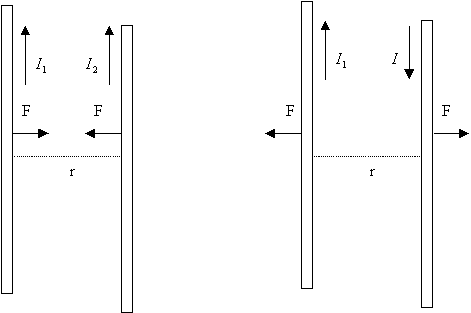
Magnets show peculiar properties.
They are objects able to attract metallic materials (items made of iron or steel).
Magnets also attract each other but only if they are properly aligned. (If the ends are not properly aligned the force between them is repulsive rather than attractive).
They show a similarity with an electric dipole behaviour: each magnet has two poles, (usually labelled with the letter N and S) and, as for electric charges, like poles repel each other while unlike pole attract one another. Hence, in some ways, the behaviour of a magnet is similar to the behaviour of an electric dipole.
The magnetic field produced around a magnet can be easily detected by sprinkling iron filings near it: the filings line up in the direction of the magnetic field produced, revealing the field lines in the neighbourhood of the magnet .

As we can see in the figure below, the magnetic field produced by a magnet has similar pattern to the electric field lines produced by an electric dipole. The main difference is that the magnetic field lines are closed loop (they have no origin and no ending point) while electric field lines always originate from positive charges and end on negative charges.

These similarities led scientists to suspect a direct connection between electricity and magnetism. In particular Oersted demonstrated that a current produces a magnetic field. His studies show that the magnetic field lines produced by a straight current-carrying wire form circles centered on the wire(figure below).

Working this way, Ampere discovered the existence of force exerted on one
current-carrying wire by another. Ampere measured the strength of this magnetic
force and studied how it varies with the distance between the wires and the
amount of current flowing in each. He showed that the magnetic force between the
wires is proportional to the two currents![]() and
and![]() and inversely proportional to
the distance
and inversely proportional to
the distance ![]() between the two wires. This statement usually takes the form:
between the two wires. This statement usually takes the form:
![]()
where the constant has the value
![]() .
.
Note that, if the currents in the wires have the same direction, the resulting force is attractive; if the currents have an opposite direction, the resulting force between the wires is repulsive.

Ampere with his experiments was the one who gave an operative definition of the unit of current through the magnetic force: One ampere (A) is the amount of current flowing in each of the two wires that produces a force per unit length of
![]()
on each wire when they are one meter apart. next...